Intro
The importance of understanding antibiotic classifications cannot be overstated, especially when it comes to drugs like cefdinir. Cefdinir is a medication that belongs to a specific class of antibiotics known as cephalosporins. These drugs are crucial in the treatment of various bacterial infections, ranging from mild to severe. The classification of cefdinir into the cephalosporin drug class is significant because it helps healthcare professionals and patients understand its mechanism of action, potential side effects, and interactions with other medications.
Cefdinir, like other cephalosporins, works by inhibiting the synthesis of the bacterial cell wall, leading to the death of the bacteria. This mechanism is crucial for treating infections caused by susceptible bacteria. The drug's classification also influences its spectrum of activity, which includes a variety of gram-positive and gram-negative bacteria. Understanding the drug class of cefdinir is essential for ensuring its appropriate use, minimizing the risk of resistance, and maximizing its therapeutic benefits.
The cephalosporin class of antibiotics, to which cefdinir belongs, is diverse and includes several generations of drugs, each with its own characteristics and uses. Cefdinir is classified as a third-generation cephalosporin, which generally offers a broader spectrum of activity compared to earlier generations, especially against gram-negative bacteria. This classification helps guide clinical decisions regarding the choice of antibiotic for treating specific infections, taking into account factors such as the suspected causative pathogens, the severity of the infection, and the patient's medical history.
Cefdinir Mechanism of Action

Cefdinir Uses and Indications
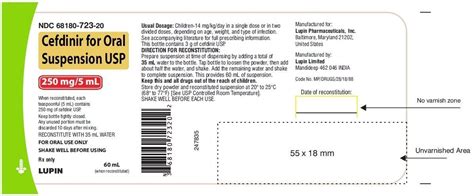
Community-Acquired Pneumonia
Cefdinir is effective against several pathogens commonly responsible for community-acquired pneumonia, including Streptococcus pneumoniae, Haemophilus influenzae, and Moraxella catarrhalis. Its oral formulation makes it a convenient option for outpatient treatment, provided the patient can tolerate oral medications and the infection is not severe.Acute Exacerbations of Chronic Bronchitis
For patients with chronic bronchitis who experience an acute exacerbation, cefdinir can be an appropriate choice, especially when the exacerbation is suspected to be of bacterial origin. Its efficacy against common respiratory pathogens makes it a valuable option in this setting.Cefdinir Side Effects and Interactions
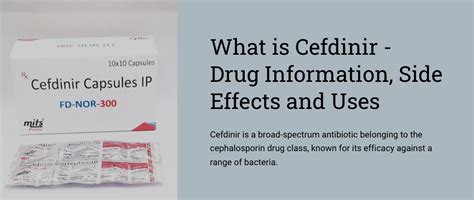
Cefdinir can also interact with other medications, which may affect its efficacy or increase the risk of side effects. For example, the absorption of cefdinir can be reduced by antacids containing aluminum or magnesium, and by iron supplements. Therefore, it is recommended to administer cefdinir at least 2 hours before or after such products.
Cefdinir Dosage and Administration
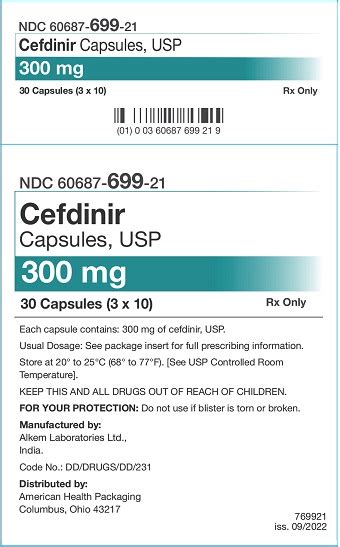
Special Populations
In pediatric patients, the dosage of cefdinir is based on the weight of the child. For children 6 months to 12 years of age, the recommended dose is 7 mg/kg every 12 hours or 14 mg/kg every 24 hours. The safety and efficacy of cefdinir in pediatric patients under 6 months of age have not been established.Cefdinir Resistance and Stewardship
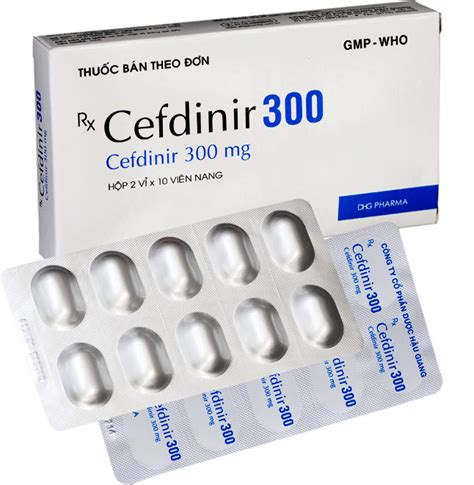
Cefdinir and Pregnancy
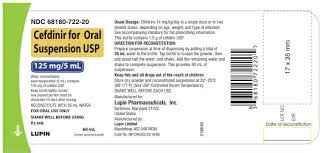
Cefdinir and Breastfeeding

What is cefdinir used for?
+Cefdinir is used to treat various bacterial infections, including community-acquired pneumonia, acute exacerbations of chronic bronchitis, acute sinusitis, skin and skin structure infections, uncomplicated urinary tract infections, and pharyngitis/tonsillitis.
How does cefdinir work?
+Cefdinir works by inhibiting the synthesis of the bacterial cell wall, leading to the death of the bacteria. It binds to penicillin-binding proteins located inside the bacterial cell wall, which are essential for the structural integrity of the cell.
What are the common side effects of cefdinir?
+Common side effects of cefdinir include diarrhea, nausea, vomiting, and abdominal pain. More serious but rare side effects can include severe allergic reactions and Clostridioides difficile-associated diarrhea.
Can cefdinir be used in pregnancy and breastfeeding?
+Cefdinir is classified as a category B drug in pregnancy and should be used only if clearly needed. It is excreted in human milk, but in small amounts. Caution should be exercised when cefdinir is administered to a nursing woman, considering the potential benefits and risks.
How can antibiotic resistance to cefdinir be prevented?
+Antibiotic resistance to cefdinir can be prevented by using the drug judiciously, adhering to principles of antibiotic stewardship, including using antibiotics only when a bacterial infection is confirmed or highly suspected, selecting the most appropriate antibiotic, and using the antibiotic for the recommended duration.
As we conclude our exploration of cefdinir, its drug class, and its uses, it's clear that this antibiotic plays a vital role in the treatment of various bacterial infections. By understanding its mechanism of action, side effects, and interactions, healthcare professionals and patients can work together to ensure its safe and effective use. If you have any further questions or would like to share your experiences with cefdinir, please don't hesitate to comment below. Sharing this article with others can also help spread awareness about the importance of antibiotic stewardship and the responsible use of medications like cefdinir.
